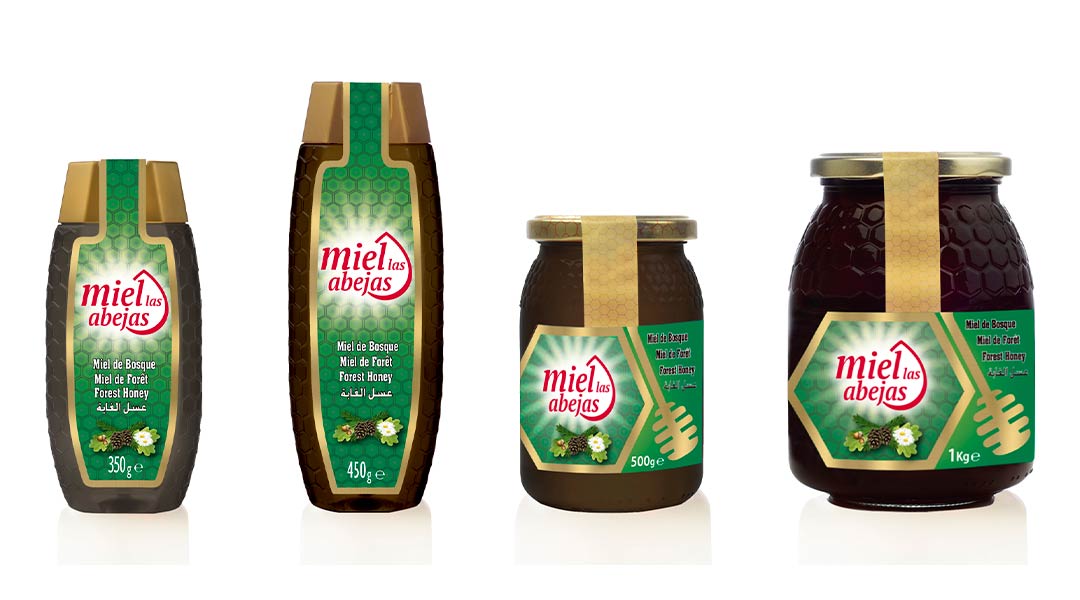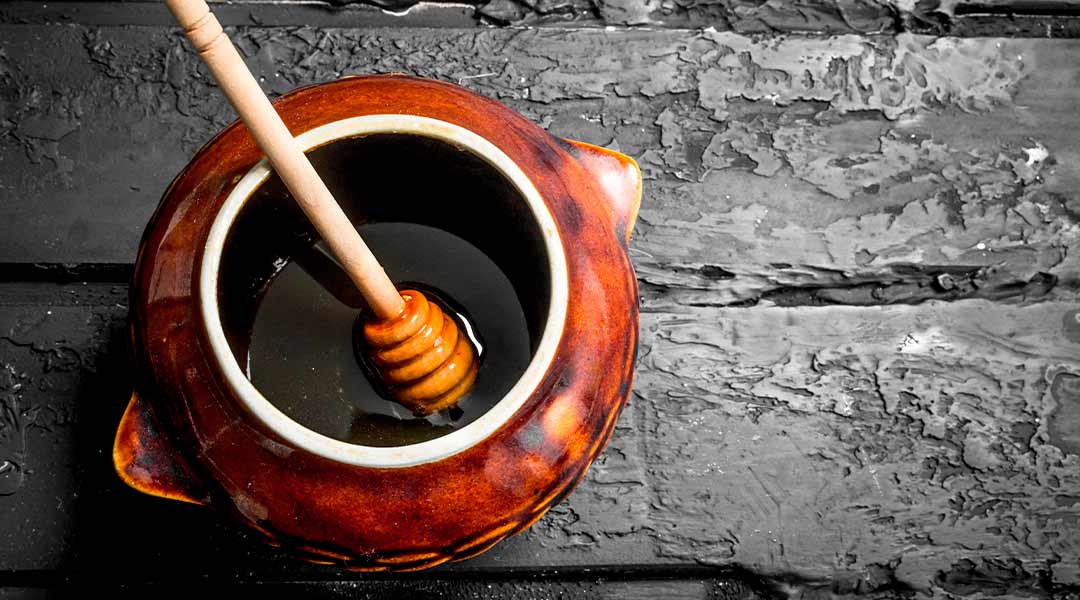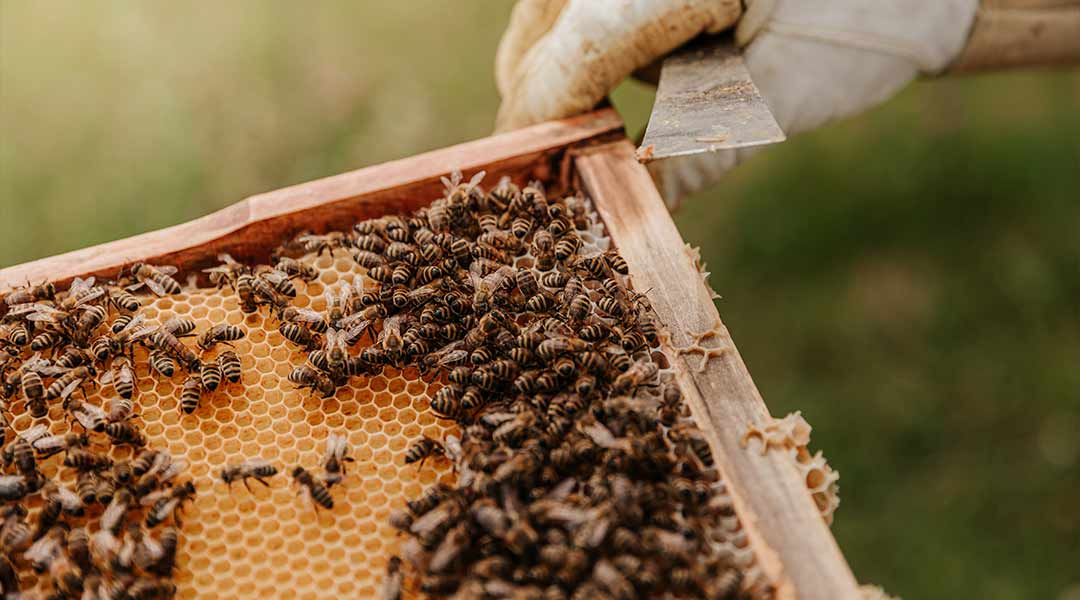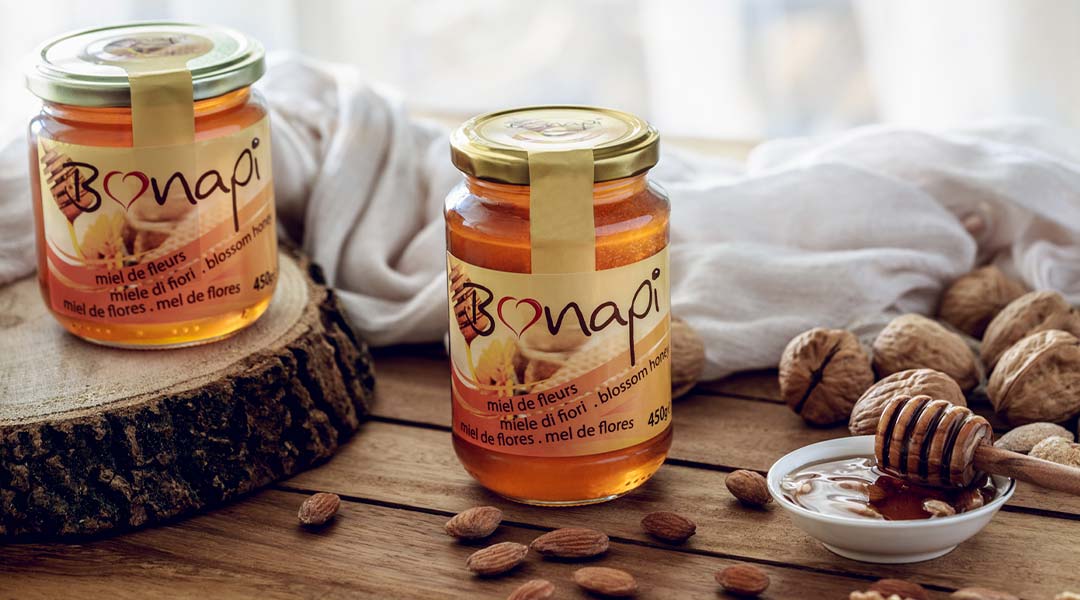To make honey, bees use nectar from flowers. However, there are some honeys that do not come from this flower nectar, or not only from that nectar. This is the case with honeydew.
Honeydew is made from nectar from trees such as cork oak, oak, etc. In this way, as it does not come from the nectar of the flowers, or at least not in a high percentage, the truth is that it cannot be considered a honey.
We also can find honeydew under the name of forest honey.

Characteristics of honeydew
Honeydew is also known as forest honey. This is because the most abundant honeydews come from trees such as holm oak, cork oak or oak.
Also, depending on the level of isolation of the hive, we will obtain pure honeydew, or a combination of it with other types of flower honeys.
Honeydews generally have a dark, glossy brown color. The truth is that depending on the variety of honeydew and the forest, its color may be lighter. Also, when it harden, they tend to clear up a bit.
The truth is that honeydew solidifies with difficulty.
It has a taste and smell of resin and spices. In this sense, its flavor is intense and powerful, with different nuances of wood, raisins or liquorice. Its flavor is reminiscent of dried fruit, with a small aftertaste and small spicy touches on the throat.
Regarding its smell, it is very subtle, and much more discreet than the smell of honeys made mainly from nectar.

Properties and benefits of honeydew
Honeydews are a great sweetener, since they have a lower proportion of sugar than honeys made from nectar.
In addition, they have a higher percentage of polyphenols. These are the compounds that give honeydew its antioxidant properties. For this reason, the harvest is used on numerous occasions to soothe sore throats, bronchitis or pharyngitis.
The humidity of the honeydew is very low, since it is around 16.5%. Its main component is fructose (33.78%), followed by glucose (26.39%). It also has a lower percentage of other sugars, such as sucrose or melezitose.
Honeydews of animal origin have a higher proportion of amino acids and mineral salts, compared to honeys from nectars. For this reason, its consumption is recommended to people who suffer from eating disorders, anemia or have a deficiency in their body.

Types of honeydew
Depending on its origin, we can find two types of honeydew:
- Vegetable origin: it occurs when, in the face of excess humidity and high temperatures, the plants expel the excess sap produced outside. Subsequently, the bees use this sap to make honeydew.
- Animal origin: It is one that is made by small insects. These feed on the sap of the trees, and later, excrete on the leaves and branches. These secretions contain numerous carbohydrates from the sap that are attractive to bees. In this way, they are collected and transformed into honey.
When it is produced
Trees begin to secrete sap in late spring or early summer, expelling excess sap outside.
This sugary substance attracts bees, which collect it and use it to make honeydew. Later, once the honeydew is in optimal condition, it will be collected by beekeepers at the end of August or beginning of September.
You may also be interested in:


